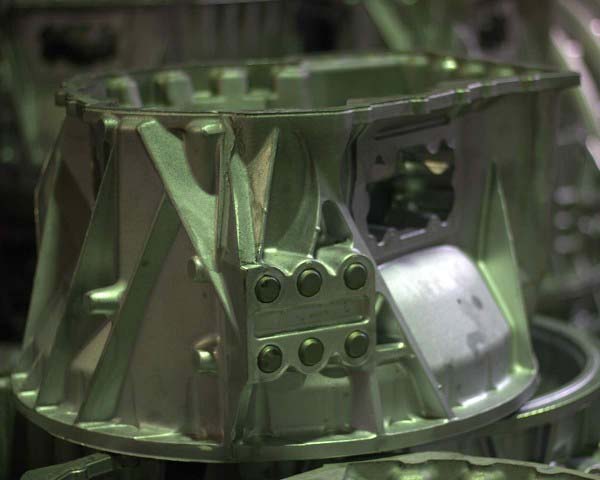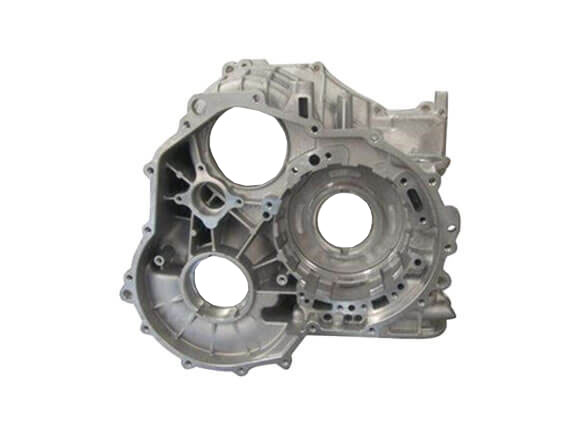Why Precision aluminum casting is perfect for lightweight metal solutions
Wiki Article
Understanding the Ecological Advantages of Light Weight Aluminum Shop Techniques
Aluminum foundry techniques play an important role beforehand sustainability within the production industry. By applying sophisticated recycling approaches and energy-efficient practices, these techniques significantly decrease waste and carbon impacts. Innovative spreading techniques even more improve source conservation initiatives. As sectors progressively prioritize ecological responsibility, recognizing the complete effect of these practices ends up being essential. What particular advancements are leading the means in this improvement?The Function of Aluminum in Sustainable Production
Several materials add to sustainable manufacturing, aluminum stands out due to its special properties and recyclability. This light-weight metal is not only sturdy yet likewise possesses superb corrosion resistance, making it a suitable choice for various applications, from automobile to building. Its high strength-to-weight proportion leads to power savings during transportation and usage. Aluminum can be reused indefinitely without shedding its integral top qualities, advertising a round economic climate.The production procedure of light weight aluminum has advanced, integrating energy-efficient methods that decrease carbon footprints. By utilizing sustainable power resources, manufacturers are increasingly decreasing the ecological influence connected with aluminum manufacturing. In addition, making use of recycled light weight aluminum requires considerably much less energy compared to drawing out and improving key aluminum, bring about reduced greenhouse gas discharges. As markets seek sustainable services, aluminum's flexibility and environment-friendly characteristics position it as a critical material in the search of greener production methods.
Advanced Recycling Techniques in Aluminum Foundries
Advanced reusing techniques in aluminum foundries are revolutionizing the method scrap light weight aluminum is processed and reused. Cutting-edge techniques, such as closed-loop recycling systems, enable factories to recover light weight aluminum from production waste and out-of-date products efficiently. These systems reduce material loss and improve the top quality of recycled aluminum, making it a viable alternative to primary light weight aluminum production.In addition, progressed sorting innovations, including automated optical sorting and X-ray fluorescence, boost the splitting up of aluminum from other products, making sure greater pureness levels in recycled outputs. This accuracy decreases contamination, which can jeopardize the integrity of the end product.
The integration of sophisticated melting modern technologies, such as induction melting and energy-efficient heating systems, enhances the recycling process, reducing energy consumption. Jointly, these advancements add to a more lasting aluminum industry by reducing dependence on virgin materials and reducing greenhouse gas discharges connected with aluminum production.
Power Effectiveness Improvements in Shop Procedures
Energy performance improvements in light weight aluminum factory operations can greatly enhance sustainability techniques. Implementing waste warmth recovery systems allows foundries to repurpose excess power, decreasing general energy consumption. Furthermore, innovations in procedure automation streamline operations, causing decreased waste and maximized resource use.Waste Warm Healing
Executing waste heat healing systems in aluminum foundries substantially boosts power performance by catching and recycling excess thermal power generated during manufacturing processes. These systems promote the conversion of lost warmth into useful power, which can be utilized for various applications within the shop, such as preheating materials or powering equipment. By recuperating heat that would certainly or else be expelled into the setting, foundries can markedly decrease their general energy intake and greenhouse gas emissions. This approach not just reduces operational expenses however additionally promotes lasting techniques within the market. In addition, the adoption of waste heat recovery technologies aligns with regulative requirements intended at decreasing environmental impact, making it an important element of contemporary light weight aluminum factory procedures.Refine Automation Conveniences
Automating processes in aluminum foundries can significantly boost power performance by maximizing production workflows and reducing waste. By implementing innovative modern technologies such as robotics and artificial intelligence, factories can enhance operations, minimizing unneeded energy consumption. Automated systems assist in precise control over temperature and material handling, ensuring that energy is utilized just when required. Furthermore, real-time surveillance enables for prompt modifications, reducing the threat of energy loss. The combination of automation not only improves performance however likewise reduces functional expenses, making shops a lot more competitive. Because of this, these energy-efficient techniques add significantly to sustainability goals, decreasing the ecological impact of light weight aluminum manufacturing while meeting boosting market needs - aluminum casting. Boosted energy efficiency via automation stands for a crucial step in the direction of greener shop proceduresMinimizing Waste With Cutting-edge Casting Approaches
Cutting-edge spreading techniques play a vital function in decreasing waste in aluminum factories. Techniques such as advanced molding and the use of recyclable products substantially reduce manufacturing scrap. These techniques not just improve effectiveness however likewise add to a much more sustainable production procedure.Advanced Molding Techniques
As industries increasingly prioritize sustainability, advanced molding methods in aluminum shops become effective remedies for decreasing waste. These ingenious approaches, such as 3D printing and precision mold making, considerably boost the performance of the casting procedure. By using computer-aided style (CAD) and simulation modern technologies, suppliers can optimize mold and mildew geometry, minimizing material use while keeping item stability. Additionally, progressed strategies enable the manufacturing of complicated shapes that conventional approaches can not achieve, decreasing the need for additional machining and thus decreasing scrap material. The adaptability of these strategies allows for rapid prototyping, further reducing preparations and energy usage. On the whole, the implementation of innovative molding methods stands for a vital step towards environmentally liable aluminum manufacturing, straightening with worldwide sustainability objectives.Recyclable Product Utilization
Recyclable products play a pivotal role in decreasing waste within aluminum shops, transforming the casting landscape through their effective use. By incorporating scrap light weight aluminum and various other recyclable components into the manufacturing imp source process, shops can substantially lower the need for virgin products. This not only conserves all-natural resources however likewise lessens energy consumption associated with mining and refining. Cutting-edge casting approaches, such as die casting and sand casting, permit smooth combination of these materials, making sure high-grade outputs. The usage of recyclable materials fosters a circular economic climate, where resources are consistently reused and repurposed, minimizing landfill contributions. Ultimately, the tactical usage of recyclables improves sustainability while advertising cost-effectiveness in light weight aluminum shop operations.Reducing Manufacturing Scrap

Life Cycle Analysis of Light Weight Aluminum Products
Although light weight aluminum is commonly recognized for its durable and lightweight properties, a detailed Life Cycle Assessment (LCA) exposes the environmental impacts related to its usage, production, and disposal. The LCA process takes a look at the power intake, greenhouse gas emissions, and resource deficiency connected to aluminum items from extraction of bauxite ore to end-of-life administration. Key aluminum manufacturing is energy-intensive, usually depending on nonrenewable fuel sources, which adds significantly to carbon impacts. In comparison, recycling aluminum provides significant environmental advantages, as it utilizes just a fraction of the energy required for primary manufacturing. Additionally, the reusing process minimizes garbage dump waste and preserves all-natural sources. The LCA likewise takes into consideration the item's longevity and potential for reuse, highlighting the importance of sustainable style. Overall, understanding the life process impacts of light weight aluminum items is necessary for making notified decisions that focus on environmental sustainability within the market.Situation Studies: Effective Sustainable Practices in the Industry
The aluminum sector has actually started to accept innovative lasting practices that attend to the environmental difficulties identified in Life process Assessments. One noteworthy situation is a leading factory read the full info here that applied a closed-loop recycling system, substantially decreasing waste and power usage. By reusing scrap aluminum in manufacturing, the center achieved a 40% decrease in its carbon impact.An additional example involves a supplier that embraced sustainable energy resources, powering its operations with solar and wind energy - Precision aluminum casting. This change not just decreased greenhouse gas discharges but likewise improved the business's credibility amongst eco aware consumers
Additionally, a third factory has bought innovative spreading strategies, which enhance material use and minimize defects, even more lowering source consumption. These study illustrate that the light weight aluminum sector can incorporating sustainable techniques, showing both environmental responsibility and financial stability, inevitably adding to a much more sustainable future.
Regularly Asked Concerns
How Does Aluminum Contrast to Various Other Metals in Sustainability?
Light weight aluminum is generally thought about more lasting than numerous steels because of its recyclability, lower power demands for manufacturing, and lowered ecological impact. Its lifecycle efficiency exceeds that of steel and copper in various applications.What Is the Carbon Impact of Light Weight Aluminum Factory Processes?
The carbon impact of aluminum shop procedures differs, normally ranging from 4 to 15 statistics lots of CO2 per ton of aluminum produced. Aspects affecting this include energy why not try this out sources, innovation, and the efficiency of operations.Are There Wellness Risks Connected With Light Weight Aluminum Shop Operations?

What Are the Expenses Related To Sustainable Aluminum Techniques?
The expenses associated with lasting aluminum methods include greater preliminary financial investments in technology, prospective rises in functional costs, and continuous upkeep. However, these are often balanced out by long-term financial savings and lowered ecological influence.Exactly How Does Light Weight Aluminum Recycling Impact Citizen Communities?
Aluminum recycling positively impacts neighborhood areas by producing jobs, reducing land fill waste, and reducing energy costs. It promotes financial development and advertises ecological stewardship, bring about much healthier living problems and enhanced community engagement in sustainability initiatives.Additionally, the use of recycled aluminum calls for significantly much less energy contrasted to removing and improving key light weight aluminum, leading to lower greenhouse gas emissions. Advanced reusing techniques in aluminum factories are changing the method scrap aluminum is refined and recycled. Aluminum Foundry. Implementing waste warmth recuperation systems in aluminum shops greatly improves power efficiency by recording and reusing excess thermal energy created during manufacturing procedures. Automating processes in light weight aluminum factories can considerably enhance energy effectiveness by optimizing production workflows and reducing waste. The carbon footprint of aluminum shop processes differs, usually ranging from 4 to 15 statistics lots of CO2 per heap of aluminum generated
Report this wiki page